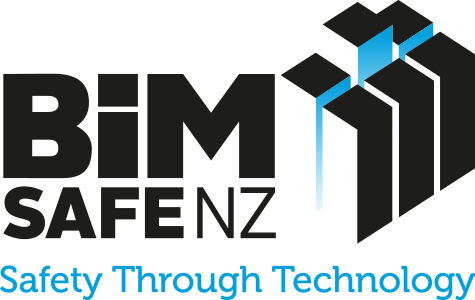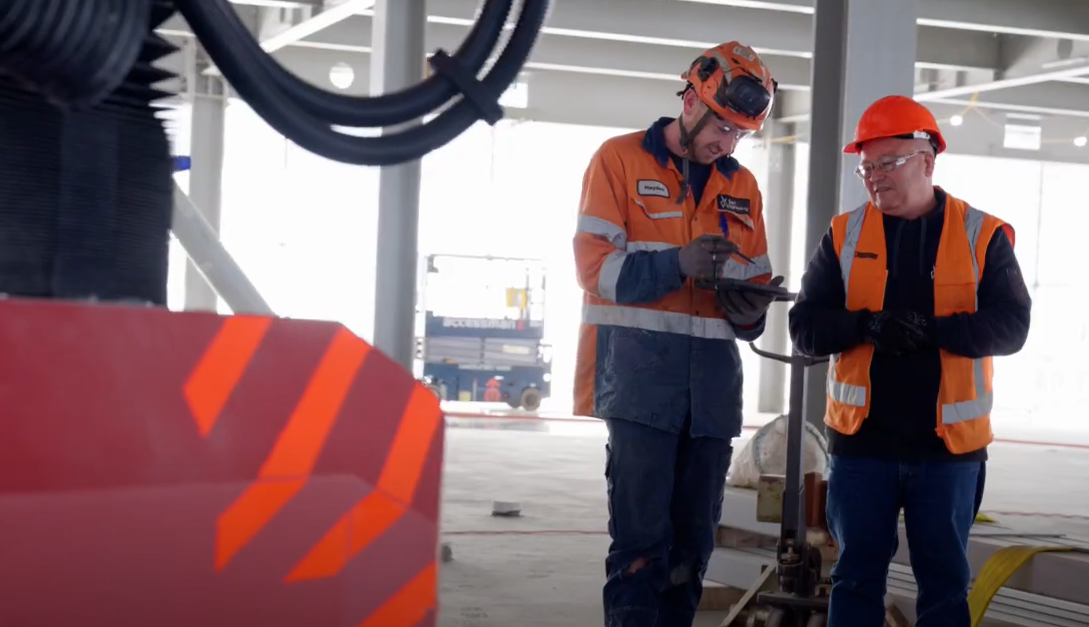Dunedin Hospital Outpatients Building: Drilling with the Hilti semi-autonomous robot
Background
The new Dunedin Hospital outpatients building is five storeys, and it is the first of two main buildings on the $1.47 billion project’s central city campus. The finished building will include day procedure and medical units, ambulatory services, planned radiology, specialist clinics, transit care unit and pathology. The construction involves the installation of a very large number of seismic restraints for the services, requiring the drilling of approximately 20,000 anchor holes in overhead structures. Traditionally, this task would have involved multiple workers operating at height, exposing them to various safety risks and physical strain.
Southbase is the main contractor on the project, with Dart Engineering providing the seismic restraints
Video
Approach
The project team embraced an innovative approach by integrating BIM with the Hilti Jaibot, a semi-autonomous drilling robot. This combination allowed for a seamless transition from digital design to physical implementation. The BIM model provides precise location data for each required hole, which is then used by the Jaibot to execute the drilling with high accuracy.
One of the key improvements made using BIM was the elimination of human error in hole placement. In the past these anchors would have been drilled with a person working from a 2D drawing and a tape measure. This involves a lot more time, and a lot more potential for mistakes. By contrast, the BIM-powered Jaibot can drill holes accurately based on the 3D model, reducing the need for rework and minimising time on site.
Worker safety is significantly improved. The integration of BIM and the Jaibot allows for a dramatic reduction in the number of workers required and eliminates the need for working at height. On this project it has gone from requiring 10 people to drill 300 holes in a day, to one person operating the robot from the floor. The operator is in a much safer environment, and is not exposed to silica dust, the risk of falls from height, or fatigue-related injuries.
Outcomes and benefits
Health and safety benefits
- Reduced exposure to height-related risks: The use of the Jaibot eliminates the need for workers to operate at height, significantly reducing the risk of falls.
- Minimised dust exposure: The Jaibot’s built-in vacuum system creates a dust-free environment, protecting workers from harmful silica dust.
- Decreased musculoskeletal injury risks: By automating the drilling process, the physical strain on workers is greatly reduced, lowering the risk of back, arm, and shoulder injuries.
- Fatigue reduction: The automation of repetitive tasks decreases worker fatigue, which in turn reduces the likelihood of accidents caused by tiredness.
- Reduced on-site personnel: The automated system reduces the number of workers required on site, decreasing overall exposure to potential hazards.
Other benefits
- Improved accuracy and reduced rework: The use of BIM in conjunction with the Jaibot ensures precise hole placement, minimising errors and the need for rework.
- Increased efficiency: The Jaibot can drill a much larger number of holes per day compared to manual methods, significantly speeding up the construction process.
Lessons learnt
BIM provides a springboard into automation
The use of automation on this project is highly effective in improving both safety and efficiency, but it would not be possible if the team were not already using BIM throughout the project.
Accurate BIM modelling is important
The success of the robotic implementation relies heavily on the accuracy of the BIM model, highlighting the importance of thorough and precise digital design work.
Investment in innovative technologies can pay off in multiple ways
By embracing new technologies, the project team was able to address potential safety issues, as well as improving efficiency, accuracy and site conditions.
Safety should be considered holistically
A comprehensive safety solution needs to consider both immediate (e.g., falls) and long-term (e.g., musculoskeletal injuries) safety risks. Indirect safety impacts such as the number of people on site, worker fatigue, and time pressure from rework and programme pressure also need to be factored into the equation.

